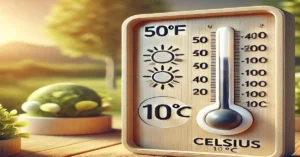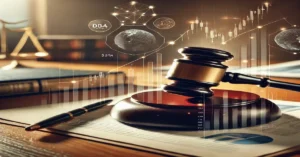Board and batten siding has been a popular choice in home exteriors for centuries. Known for its classic, rustic appeal, this style of siding adds depth and character to any building. Whether you’re renovating an old farmhouse or updating a modern home, board and batten siding offers durability, visual interest, and a timeless aesthetic.
This comprehensive guide will explore board and batten siding, its benefits, materials, installation process, maintenance, and cost considerations.
What is Board and Batten Siding?
Board and batten siding is a type of exterior cladding that consists of wide vertical boards (the “boards”) with narrow strips (the “battens”) covering the seams. This design provides a distinct, layered look that is both stylish and functional.
History and Popularity
- Originally used in barns and farmhouses due to its durability.
- Today, it’s a common choice for modern, rustic, and farmhouse-style homes.
- Adds depth and texture to both traditional and contemporary homes.
How It Works
- Boards: Wide planks installed vertically.
- Battens: Narrow strips placed over the seams to create a layered effect.
- Can be used as full-home siding or as an accent feature.
Pros and Cons of Board and Batten Siding
Like any siding material, board and batten has its advantages and drawbacks.
Pros:
- Timeless Appeal – Works well with traditional and modern home designs.
- Durability – With proper materials, it can withstand harsh weather conditions.
- Customizable – Available in multiple materials, colors, and finishes.
- Increases Home Value – Adds charm and curb appeal, making it a desirable feature for homebuyers.
- Energy Efficiency – Provides an extra insulation layer, improving home efficiency.
Cons:
- Higher Initial Cost – More expensive than some other siding options.
- Requires Maintenance – Wood versions need periodic painting or staining.
- Installation Complexity – Requires professional installation for best results.
Best Materials for Board and Batten Siding
Board and batten siding is available in various materials, each offering unique benefits.
1. Wood
- Traditional choice offering a natural look.
- Common types: Cedar, Pine, Redwood.
- Requires staining or painting for protection.
2. Vinyl
- Budget-friendly and low maintenance.
- Resistant to moisture, rot, and insects.
- Available in various colors and finishes.
3. Fiber Cement
- Extremely durable and weather-resistant.
- Mimics the look of wood with minimal maintenance.
- Fire-resistant and long-lasting.
4. Metal
- Often used in modern and industrial designs.
- Durable and resistant to extreme weather.
- Available in aluminum and steel options.
5. Engineered Wood
- More affordable than natural wood.
- Pre-treated for resistance against moisture and pests.
- Requires less maintenance than real wood.
How to Install Board and Batten Siding
Installing board and batten siding requires precision and planning. While professional installation is recommended, here’s an overview of the process:
Tools and Materials Needed:
✔ Measuring tape
✔ Saw
✔ Level
✔ Hammer or nail gun
✔ Boards and battens
✔ Exterior-grade nails
✔ Caulk and sealant
Step-by-Step Installation Guide:
- Measure and Plan: Determine the board widths and batten placement.
- Prepare the Surface: Ensure the wall is clean and dry.
- Install the Boards: Attach vertical boards to the wall, leaving space for expansion.
- Add the Battens: Cover the seams with battens, securing them with nails.
- Seal and Finish: Apply caulk at seams and paint or stain for protection.
Maintenance and Longevity
Proper maintenance extends the lifespan of board and batten siding.
Cleaning and Upkeep:
- Wash with mild soap and water annually.
- Inspect for cracks, warping, or loose battens.
- Reapply paint or sealant as needed (especially for wood siding).
Lifespan by Material:
- Wood: 20-40 years with regular upkeep.
- Vinyl: 30-50 years with minimal maintenance.
- Fiber Cement: 50+ years with proper care.
- Metal: 40+ years, resistant to extreme conditions.
Cost of Board and Batten Siding
Price Breakdown:
- Wood: $3 – $10 per square foot
- Vinyl: $2 – $7 per square foot
- Fiber Cement: $5 – $12 per square foot
- Metal: $4 – $9 per square foot
Installation Costs:
- Professional installation: $4,000 – $15,000, depending on home size and materials.
- DIY installation can save labor costs but requires expertise.
Board and Batten vs. Other Siding Options
| Feature | Board and Batten | Vinyl Siding | Brick | Stucco |
|---|---|---|---|---|
| Cost | Moderate | Low | High | High |
| Durability | High | Moderate | Very High | High |
| Maintenance | Moderate | Low | Low | Moderate |
| Aesthetic Appeal | Classic & Rustic | Versatile | Timeless | Mediterranean |
Conclusion
Board and batten siding is a versatile, stylish, and durable choice for homeowners looking to enhance their home’s exterior. Whether you prefer classic wood, low-maintenance vinyl, or long-lasting fiber cement, this siding option provides charm and resilience.
Are you considering board and batten siding for your home? Contact a professional contractor today to get started!
FAQs About Board and Batten Siding
1. Is board and batten siding expensive?
It can be more costly than vinyl but is a mid-range option compared to brick or stucco.
2. Can board and batten siding be installed over existing siding?
Yes, but it depends on the current material and condition of the wall.
3. Is board and batten good for all climates?
Yes, but material choice matters. Fiber cement or metal is better for extreme weather.
4. How often does wood board and batten need to be repainted?
Every 5-7 years, depending on exposure to elements.
5. Can I install board and batten siding myself?
DIY installation is possible but requires precision and proper tools.









